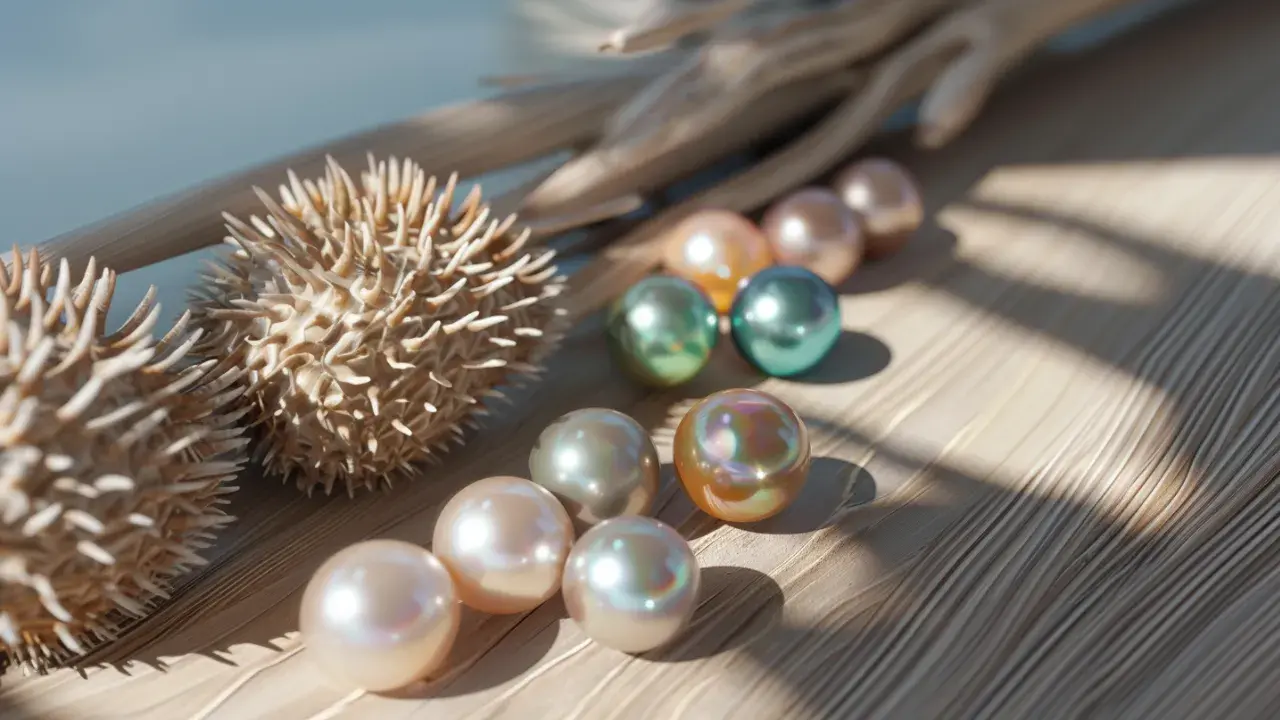Why is there a giant pearl in La Paz?
By Arthus • Posted April 22 • 2024.
We must remember that pearls have been present in the history of La Paz for centuries, even before it had its current name. The Guaycuras, for example, used to incorporate them into their clothing or as ornaments. In fact, it is said that when Hernán Cortés arrived here, he was so impressed by the pearl-covered garments that he did not hesitate for a second to conquer the place, despite the harsh climate and remote location. However, he never succeeded; the tribes were too hostile, and as we know, the area is in a desert, making Cortés' adventure a failure. It would be years later when the Spanish conquest would finally reach this area. But that's another story; let's return to our topic: the pearls of La Paz.
For centuries, the pearls of La Paz were exploited first by the Spaniards, then by the Mexicans, once the nation achieved its independence after 11 years of bloody struggle. I believe the most precise word is overexploited; so much so, that many decades ago, they ceased to exist in their natural form, meaning oysters in the sea, and now exist only in specialized mollusk farms, i.e., pearl farms. While these are not artificial pearls in the sense of being fake, they are not pearls obtained directly from the sea.
You might also be interested in:
By the way, do you know how a pearl is created inside an oyster? Well, it goes like this:
It all begins when a foreign body is introduced into the oyster, which might be a grain of sand, a parasite, or any other small object. This can happen because the oyster needs to filter water to feed and breathe, so sometimes something gets inside. To protect itself from this foreign body, the oyster begins to cover it with layers of nacre, also known as mother-of-pearl. Nacre is a smooth, shiny substance that forms the inner layer of the oyster's shell. Then, the oyster continues to cover the foreign body with nacre, layer by layer, and over time, these layers harden and are polished against each other, eventually forming a pearl. When I mention 'over time', I mean that this is a process that can take from months to several years, depending on the type of oyster and the environment where it is located, and this also affects its quality, color, and size. In La Paz, the conditions were right to produce huge pearls, so large that one of them has adorned the British royal crown for several decades.
To commemorate the long-standing relationship between pearls and this city, the sculptor Octavio González Gutiérrez created a sculpture called "La Perla de La Paz" featuring a giant pearl, using stainless steel for both the pearl and the oyster. It is prominently placed on the Malecón of La Paz, the most frequented area without a doubt and an excellent spot for both residents and tourists to appreciate this enormous steel pearl while enjoying a stroll on this beautiful boardwalk.
"La Perla de La Paz" was crafted from stainless steel for two main reasons: when polished, the surface resembles that of a real pearl, and it is highly resistant to the corrosion typical of the salty environment in a city like La Paz, ensuring that its spectacular shine and finish will last for many more years. Additionally, the polished steel reflects the surrounding elements, allowing it to integrate precisely into the maritime and urban landscape of the Malecón, not just as another element but as its most representative artistic piece.
The sculpture is so impressive and well-crafted that one can see not only the pearl but also the oyster from which it emerges. As I mentioned earlier, the pearl is made of polished stainless steel, while the oyster is made of bronze, giving it a spectacular contrast and adding even more beauty to the sculpture. Octavio knew what he was doing! When you visit this work, get close to it and see the reflections in the pearl of everything around it, as well as the details in the bronze oyster, which definitely manage to recreate a natural oyster, but of a gigantic size.
So, when they tell you there is a giant pearl in La Paz, now you know it's true, even though this pearl is made of steel and held up by a concrete structure. Without a doubt, there is a giant pearl in this city, specifically in one of its most beautiful and visited areas, like the Malecón of La Paz.
In conclusion, it's a pity that in La Paz, pearls no longer exist as they once did, certainly a strong lesson for everyone about the overexploitation of natural resources. However, the pearl farms in the city aim to somehow resume the enormous tradition this city had in working with these divine formations, and the sculpture of La Perla serves as a constant reminder of the marine wealth of La Paz's pearls. The most curious thing of all is the value that pearls can have, starting as foreign bodies that an oyster covered simply to protect itself.
To see more incredible pictures, go to the Pinterest board for this article: Click

Tastes of La Paz.

